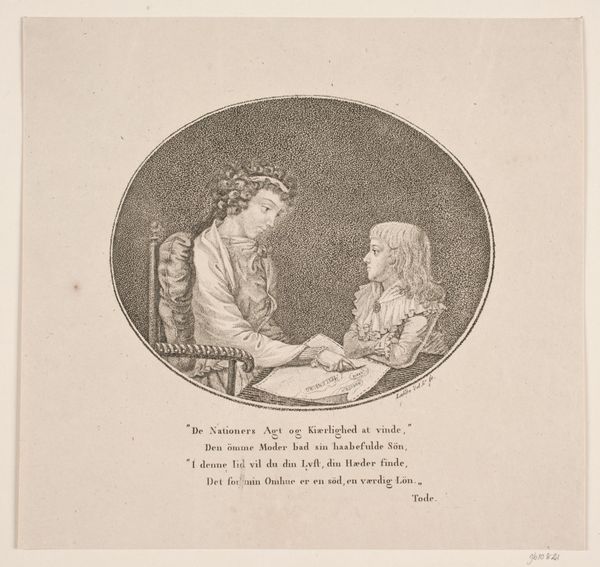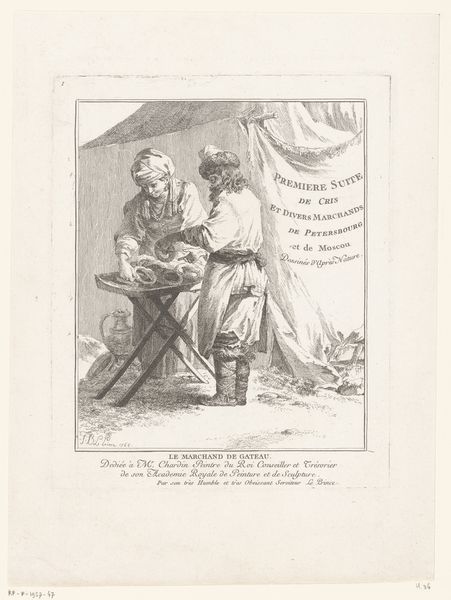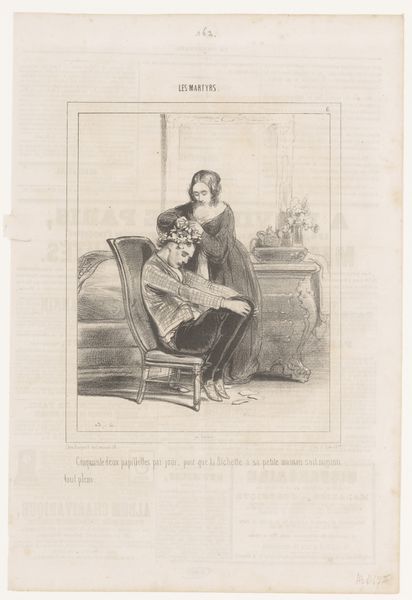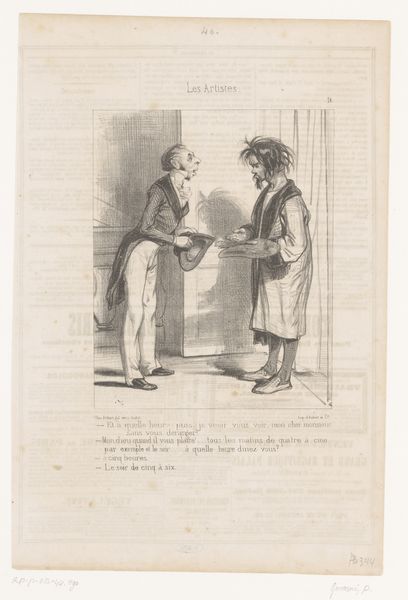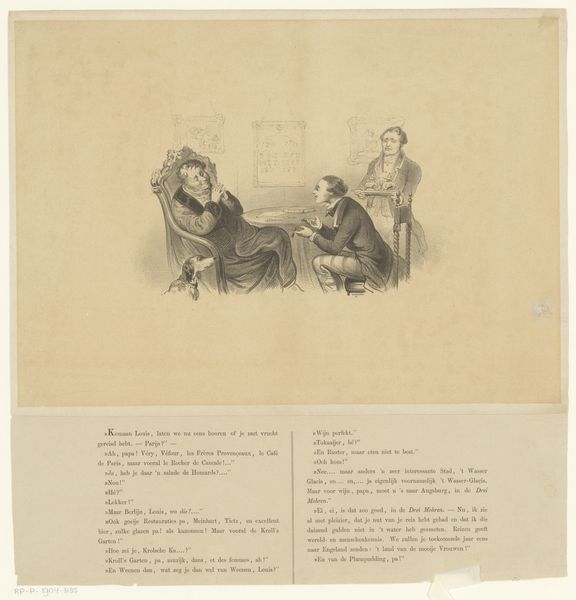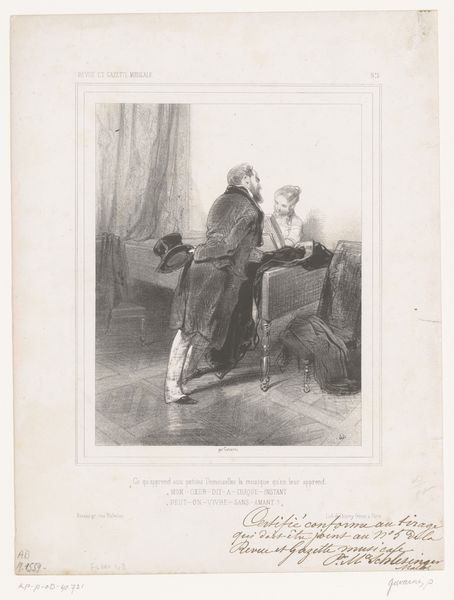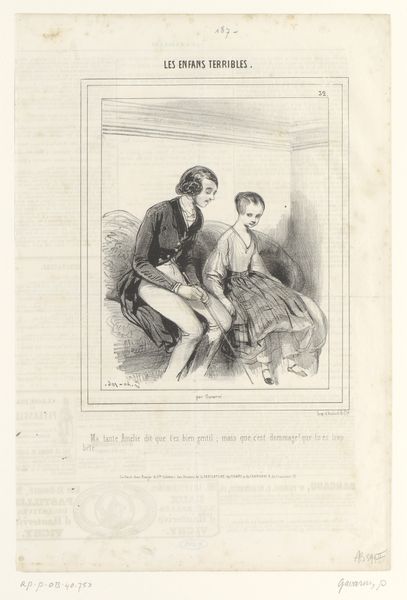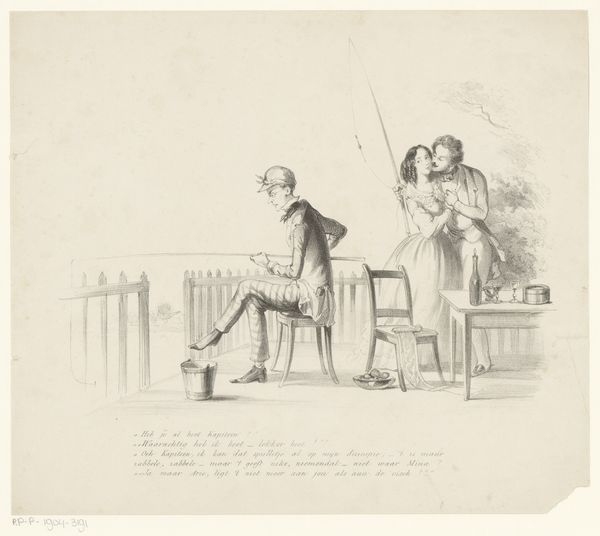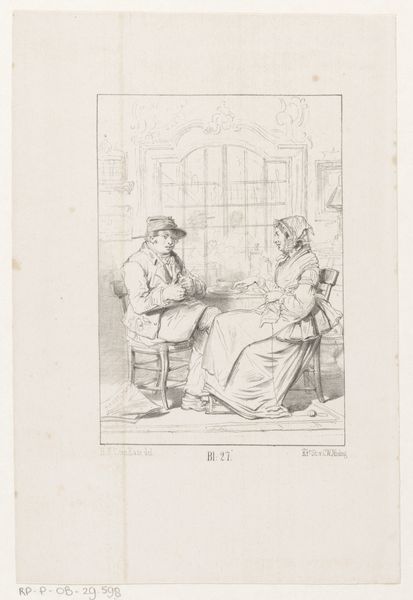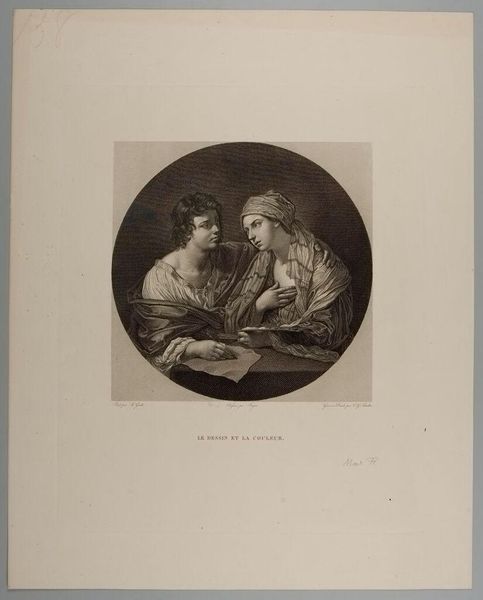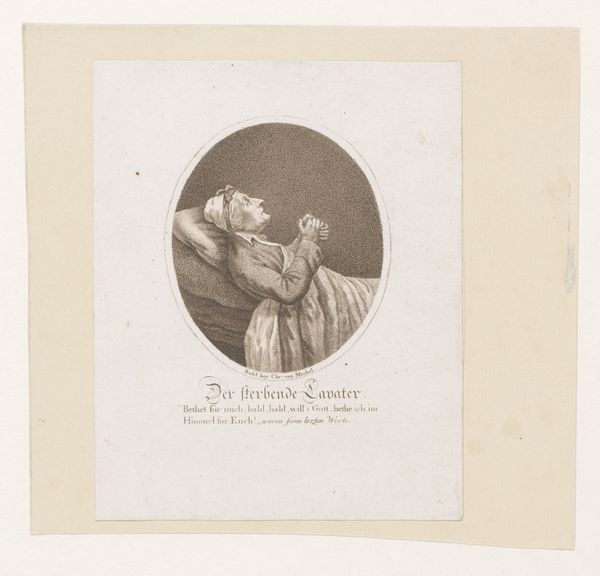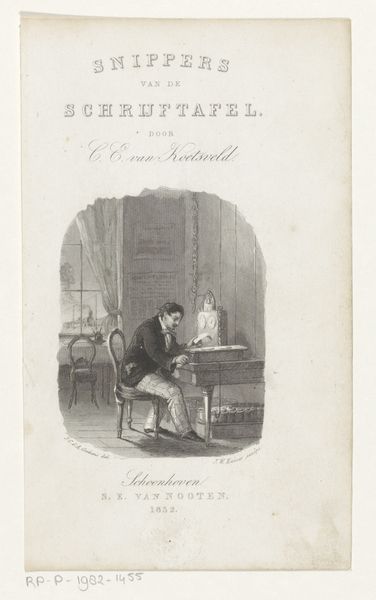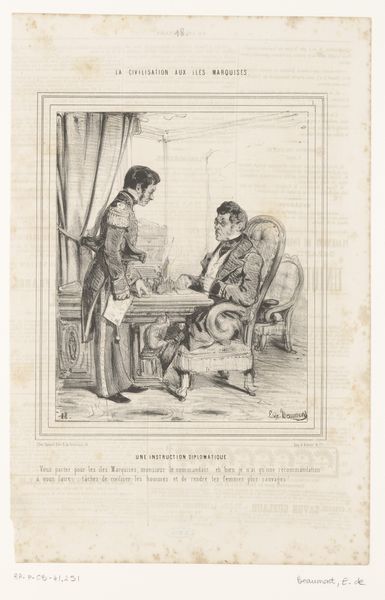
Dronning Sophia Friderika med arveprinsen 1794 - 1795
0:00
0:00
print, etching
#
pencil drawn
#
toned paper
#
light pencil work
# print
#
etching
#
pencil sketch
#
old engraving style
#
personal sketchbook
#
pencil drawing
#
pencil work
#
watercolour illustration
#
watercolor
Dimensions: 173 mm (height) x 212 mm (width) (billedmaal)
Curator: Looking at this delicate etching, "Dronning Sophia Friderika med arveprinsen" from 1794-95 by Gerhard Ludvig Lahde, I'm immediately drawn to the intimate scene. Editor: It has an incredibly tender feeling, doesn't it? Almost fragile. The subtle gradations in tone achieved through etching emphasize the texture of the paper itself and highlight the quiet connection between the mother and child. Curator: Yes, it’s striking how the print medium –etching specifically, allowing for delicate lines and shading—becomes almost inseparable from the sentiment being portrayed. This print would have been relatively accessible. How do you think its creation and distribution shaped its meaning? Editor: Well, consider the context. It was a time of significant social and political upheaval across Europe. Royalty needed to cultivate and disseminate particular images, and the medium of print allowed for a relatively broad reach. I would venture this was intentionally created to foster empathy. A loving mother educating her son, the future leader – it’s powerful imagery designed to project an aura of benevolent leadership. The text reinforces that point directly. Curator: I agree. Note the relatively simple clothing, nothing too opulent to distract. Even the act of them creating marks or practicing handwriting draws them down to a humble activity, grounding the ruling family within society. The artist clearly understood that visual signifiers within a production could play an integral role. What sort of viewership are we targeting through material decisions such as print type and tonal selections. Editor: Precisely. The limited tonal range, inherent in etching, perhaps even suggests austerity or at least a down-to-earth accessibility that richer artistic choices wouldn't allow. What seems most poignant, though, is the creation of a memorial for this mother figure to celebrate royal mother, whose existence in turn celebrates the hereditary monarchy. Curator: It is that duality—between intimate moment and strategic projection—that I find so compelling. The interplay of labor, material, and subject reveals not only artistic skill, but the complex political maneuvering behind imagery from this period. Editor: Exactly, an echo of familial intimacy resonates even now, and to consider how prints participate within public sentiments only enrich what this artist accomplished in communicating about nationhood through domestic representation.
Comments
No comments
Be the first to comment and join the conversation on the ultimate creative platform.

